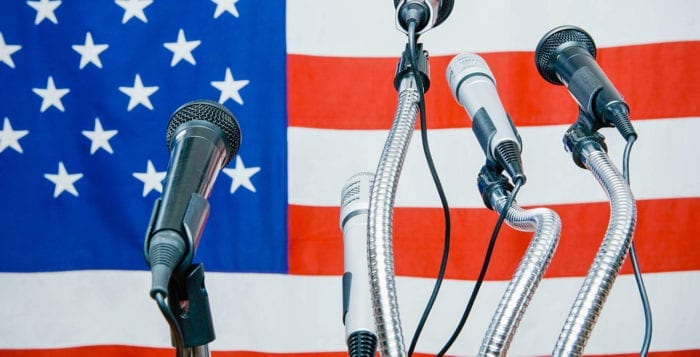When voters head to booths Thursday to participate in several statewide primaries, it is unlikely that the race for a judicial seat presiding over Suffolk County’s Surrogate’s Court will be at the top of their minds. We understand. The governor, lieutenant governor and attorney general races are likely what will drive primary voters to the polls, and deservedly so, as those are high-profile positions with juicy political implications for those who track things like the shifting nuclei of both parties.
So for those who haven’t paid close attention to what’s going on in a judicial race for a court most people probably never heard of, there’s a few things we think voters should know.
Tara Scully and Theresa Whelan are set to square off in the Democratic primary Sept. 13. Scully, a registered Republican, has already gotten the nod to secure that party line in the general election, meaning if she wins the Democratic primary, her name will appear next to both major political parties come November. Whelan, on the other hand, is an actual Democrat, though Newsday has reported that based on a deal cut by party bosses, if she wins the primary she’ll also be granted the Conservative Party line in the general election. Have we lost you yet? To summarize, on November’s general election ballot either a Republican will have both major lines or a Democrat will be listed as both a Democrat and a Conservative.
To try to get to the bottom of this mess, we invited the candidates in for a discussion with the TBR News Media editorial staff Sept. 6. While we are not endorsing a candidate, we have some thoughts we’d like to share anyway.
We admire what Scully did — stepping up and answering a call for a candidate unshackled by predetermined deals. She was able to earn enough petition signatures in a short window of time to run on both major party lines. However, if the result is she is representing both Democrats and Republicans on the ballot in November, it’s difficult to argue that voters still have a fair choice.
And while Whelan is a Democrat seeking a nod from her own party, rewarding backroom dealing designed to circumvent the will of voters is not a practice that should be encouraged either.
Having said all of that, after being in a room with the candidates for an hour, a few things became very clear. Both candidates are running with their hearts in the right place. They each expressed a desire to preside over a court that requires a touch of empathy and compassion, with fairness being of the utmost importance and politics divorced from the job. We also love to see political races featuring two accomplished and qualified women. Each has served as president of the Women’s Bar Association in addition to a litany of other impressive resume lines. Both seem to realize as well that they are essentially — no pun intended — surrogates having the political baggage marring this race imposed upon them. The discussion was respectful, truthful and honest, and each expressed that she had nothing bad to say about the other personally.
Regardless of the outcome of this race, we hope what voters glean from it is yet another reminder that citizen vigilance is not just important for a healthy democracy, but in reality, it’s the only thing keeping it alive. Research candidates. Figure out what these people stand for before you enter a voting booth or be prepared to live with the consequences.





